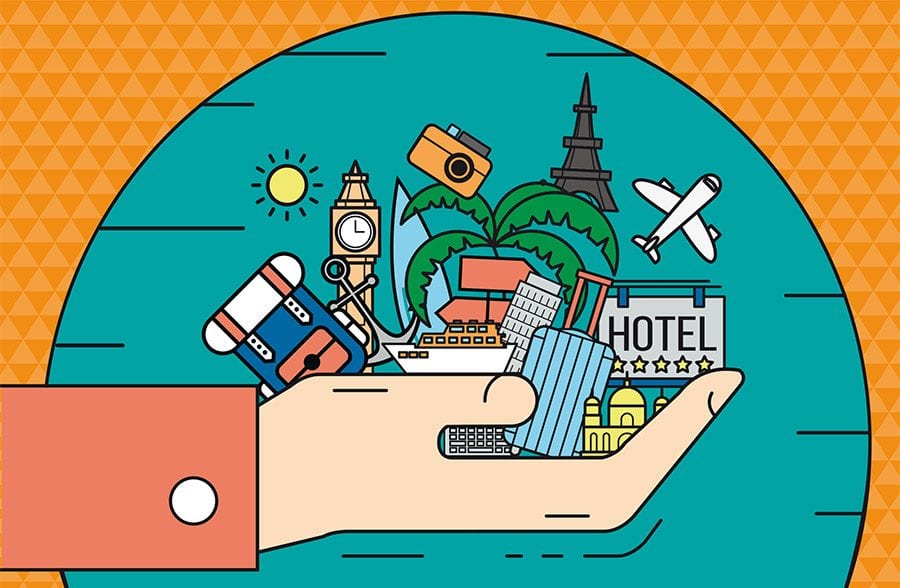International tourism is constantly evolving, and with it, the way destinations communicate and promote themselves in a globalized market. To stand out in this competitive environment, destinations must overcome traditional barriers and use innovative communication solutions that connect with travelers worldwide. In this article, we will explore how tourism communication is transforming the way destinations attract new visitors and create memorable travel experiences.

Tourism Communication: Connecting Worlds
Tourism communication is the bridge that links destinations with international travelers. In an era where consumers are more informed and have more options than ever before, it is crucial for destinations to communicate clearly, attractively, and persuasively. But offering information is not enough; destinations must tell a story that inspires and motivates travelers to choose their place over others.
This is where tourism branding comes into play. A destination with a strong brand and clear identity is more likely to stand out in travelers’ minds. Tourism branding not only creates a visual image for the destination but also establishes an emotional connection, generating trust and attracting travelers to live the experience.
Strategic Communication Solutions to Overcome Barriers
International tourism faces barriers such as cultural differences, languages, and global perceptions. Strategic communication solutions are designed to overcome these obstacles and ensure the destination’s message effectively reaches the right audience. Here are some key strategies revolutionizing international tourism marketing:
-
Message Personalization
One of the most effective tourism communication strategies today is message personalization. Not all travelers seek the same things, so it is essential to tailor content to the expectations of each demographic group. Digital marketing tools for tourism allow segmenting audiences by age, location, interests, and behaviors, helping destinations create personalized messages that connect more directly with each traveler type.
-
Visual and Experiential Content
Visual content is one of the most powerful drivers in tourism promotion. Images and videos not only showcase the destination’s beauty but also allow travelers to imagine themselves there, living the experience. Experiential marketing also plays a fundamental role by encouraging the design of unique and memorable activities that can be highlighted in tourism advertising campaigns. This enables destinations to promote more than just places—they promote emotions and adventures travelers want to live.
-
Use of Immersive Technologies
Technological advances have opened new possibilities for managing tourist destinations. Tools like virtual reality (VR) and augmented reality (AR) enable travelers to experience a destination before arriving. These technologies create a deeper connection between the traveler and the place by offering an immersive preview of the tourism experiences they can enjoy. Integrating these tools into tourism communication strategies can generate a significant competitive advantage.
Tourism Promotion in the Digital Era
On the international stage, digital marketing for tourism has allowed destinations to reach global audiences with unprecedented reach. Promotion campaigns on social media, travel blogs, and video platforms like YouTube are essential to capture the attention of modern travelers.
Tourism content shared on these channels must be highly visual and narrative-driven, telling a story that resonates with travelers’ interests. At the same time, the content must be flexible enough to adapt to different international markets. This includes adapting language and cultural sensitivity, enabling effective communication regardless of where travelers view it from around the world.
-
Collaborations with Influencers and Content Creators
Influencer marketing is a trend that has revolutionized tourism advertising. Collaborating with content creators and influencers who have relevant audiences can significantly impact a destination’s visibility. Influencers not only promote the destination but also offer an authentic and personal view of what it means to visit that place. This authenticity increases the destination’s credibility and motivates followers to seriously consider traveling there.
Sustainable Tourism: The Future of Tourism Branding
Sustainable tourism has become a priority for both travelers and destinations. Modern tourists seek experiences that are not only enjoyable but also respectful of the environment and beneficial to local communities. This presents a unique opportunity for destinations wanting to integrate sustainability into their tourism branding.
Tourism promotion campaigns should include sustainable practices such as using renewable energy, conserving biodiversity, and supporting the local economy. Communicating these values through strategic communication solutions can attract a more conscious and responsible audience that seeks memorable experiences without leaving a negative footprint.
Tourism Destination Management: Innovation and Adaptation
Destination management must align with tourism branding strategies and communication solutions. To achieve this, constant innovation in how a destination is presented and managed is necessary. Traveler feedback, adaptability to new trends, and commitment to continuous improvement are key aspects to ensure a destination not only promotes itself well but delivers on its promises.
Moreover, the incorporation of advanced technologies in management, such as tourism intelligence systems and data analytics, allows destinations to monitor traveler behavior and adjust strategies in real time to maximize results.

Conclusion: Revolutionizing International Tourism with Strategic Communication
Communication solutions are breaking down the traditional barriers of international tourism. From message personalization to the use of immersive technologies, modern strategies allow destinations to connect more effectively with a global audience. The future of tourism marketing lies in destinations’ ability to adapt to traveler demands and use innovative tools to transform the travel experience.
With a solid tourism communication strategy that combines tourism branding with a sustainable and adaptable approach, destinations can not only attract more international tourists but also create experiences that leave a lasting impression on their visitors.

